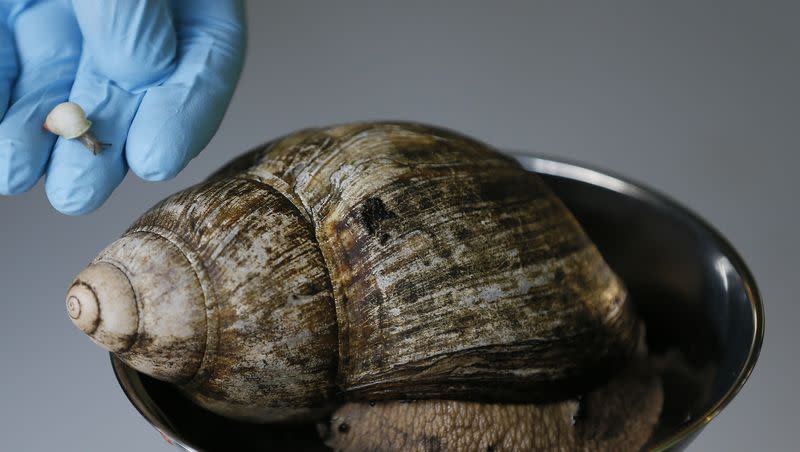Florida counties under quarantine after sighting of giant African snail

Earlier this week, three counties in Florida — including Broward, Lee and Pasco — went under quarantine after sightings in the area of giant African land snails.
The quarantine does not keep residents in their homes, but rather warns residents not to let pets or family members touch or eat the snail, as it can carry diseases and parasites — it’s an eradication order, as the state agricultural department put it.
This is the third time since 1969 that the invasive species has been found in the state. The last time was in Miami-Dade County in 2011 and it took the county 10 years and $1 million to eradicate the species, per The Washington Post.
To eradicate the population, boric acid granules will be released that shouldn’t be harmful to other animals, plants or humans.
How do giant African land snails make it into the U.S.?
Smugglers often bring the snails to the United States to sell as delicacies or even as pets, the Deseret News reported earlier this year. In March, a man in Detroit was caught with six living snails in his suitcase.
Usually native to East Africa, the snail has made its way to other parts of the continent and beyond to Hawaii, the mainland United States, Brazil, the Caribbean, the Pacific Islands and Asia, reported the Post.
Why are giant African land snails dangerous?
The snails’ not-so-strict diet includes 500 different kinds of plants and even the stucco of homes, making it dangerous to Florida’s climate and agriculture, the eradication program issued by the Florida Department of Agriculture says.
The species also carries the parasite rat lungworm, which causes meningitis in humans.
To top it off, the species spreads like wildfire. Each female lays up to 2,500 eggs a year and there’s no natural predator in the area.
What do giant African land snails look like?
There are two different kinds currently in Florida — one type has “dark brown shells” and “grayish-brown flesh” while the other has “light to dark brown shells with milky white flesh,” the Florida Department of Agriculture says. Both types can get up to 8 inches long.
Related

